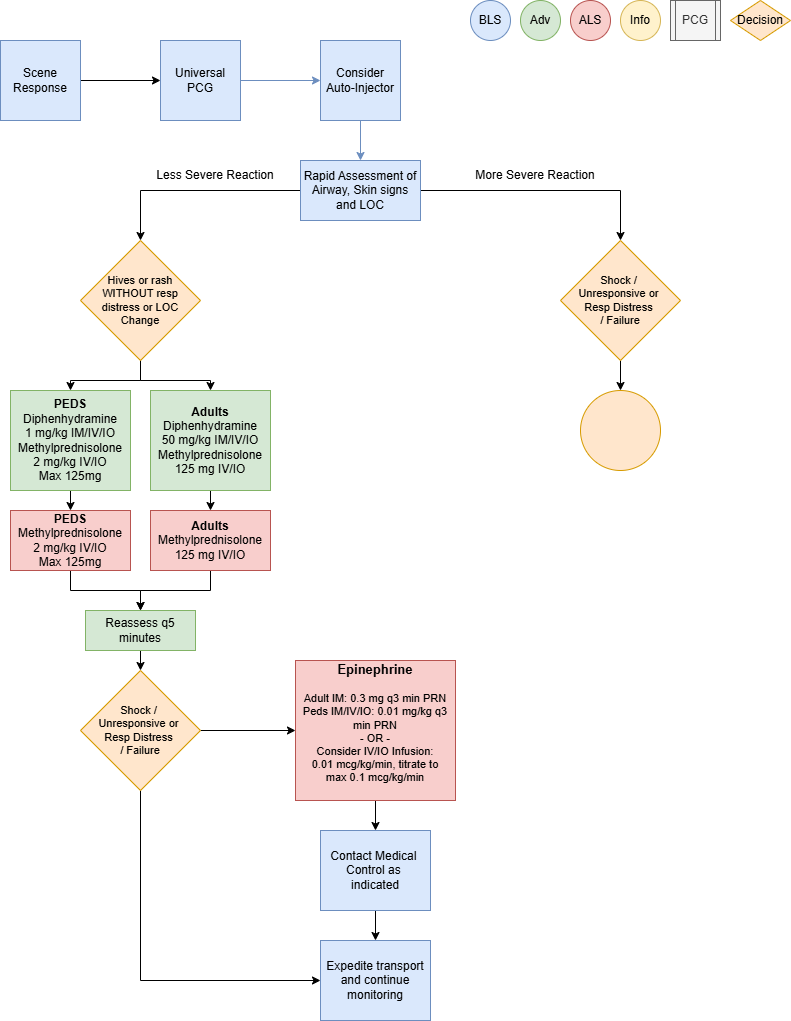Epistaxis
This policy applies to: Patients whose chief complaint is severe or prolonged bleeding from the nose.
Exclusion Criteria: Patients with respiratory compromise may first require airway control and mechanical ventilation. Patients with hemodynamic compromise may first require volume and blood product resuscitation.
Recognize
- Severity of Bleeding
- Airway patency
- Distress or Anxiety
- Blood Thinners / Coagulopathies
- Hemodynamic status
- Facial trauma
- Environmental factors
Evaluate
- Medical History and Medications
- Airway patency
- Circulatory status
- Bleeding disorders
- Estimate Blood Loss
- Pain
Administer Treatment
- Patient positioning
- Place patient in an upright sitting position with a forward lean to prevent ingestion or aspiration of blood.
- Apply direct pressure to the soft part of the nose.
- Provide oral suctioning as needed.
- Manage hypovolemia / shock as indicated.
- Manage airway as indicated
- Consider antiemetics for nausea associated with blood ingestion. Avoid PO administration.
- Zofran 4mg IV/IO
- Consider analgesia.
- Consider mild sedation due to risk of increased bleeding from anxiety associate hypertension.
- If bleeding unresolved via direct pressure consider nasal packing.
- Prepare mixture of:
- 1ml Epinephrine 1:1000
- 1ml Lidocaine HCl 2%
- MAD Device
- Administer 1ml of mixture to each nare. Using gauze to prevent leaking after administration.
- Consider IV/IO opioids.
- Begin packing each nare either with soft rolled gauze or a commercial nasal packing device.
- Prepare mixture of:
Consider Differentials
- Facial Fractures
- Uncontrolled Hypertension
- Illicit drug use
- Bleeding Disorders
Navigate


References
Protocols
Medications
Procedures
Resources
Campbell, Ronna. “Anaphylaxis: Emergency Treatment.” UpToDate, January 2022.Sicherer, Scott. “Prescribing Epinephrine for Anaphylaxis Self-Treatment.” UpToDate, January 2022.“U.S. Army Medevac Critical Care Flight Paramedic Standard Medical Operating Guidelines.” Jan. 2020.
